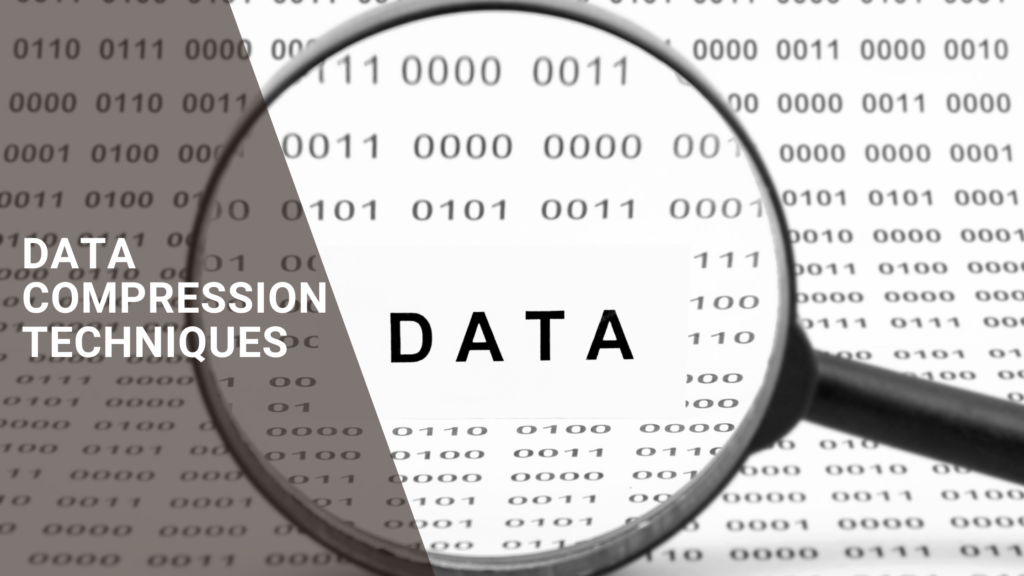Amp up your vision camera storage with five data compression techniques to optimise storage efficiency without compromising image quality. Discover innovative methods that reduce file sizes, extend storage capacity, and enhance data management for high-resolution footage.
These techniques ensure that your vision camera systems operate at peak performance, giving you more room to capture critical moments while maintaining superior image fidelity.
Whether you’re managing a surveillance network or a creative project, these cutting-edge compression strategies will transform your storage capabilities, enabling you to maximise your resources and streamline your workflow.

Let’s see some examples.
5 Examples of Data Compression Techniques
Here are five popular examples of data compression techniques. Let’s see how you can apply these types of compression in real-life situations:
Lossless Compression
This type of data compression reduces the file sizes without corrupting any important information in the process. Think of when you had to send 100s of pictures by mail. Doing that would take up a lot of time and multiple emails. The solution? Compression files like:
- ZIP
- GZIP
- PNG
Let’s see another one from the list of data compression techniques.
Lossy Compression
In lossy compression, data in a file is permanently removed and cannot be restored to its original form after decompression, hence it is also known as irreversible compression. Despite the data loss, the reduction in quality is often imperceptible. Common examples of lossy compression include:
- JPEG (image files)
- MP3 (audio files)
- MPEG (video files)
Video Compression
This process reduces the file size of a video file by compressing or reducing the data needed to represent its content. However, in the process of doing so, it does not lose too much visual information. This is what powers every video you see on different social media platforms, including Instagram, YouTube, Netflix and TikTok. The formats for compressing used in this case are:
- H.264 (Advanced Video Coding)
- HEVC (High-Efficiency Video Coding)
Just like videos you can also compress texts.
Text Compression
Amongst all data compression techniques, this one is quite similar to the lossless process. It allows you to restore the original text from its compressed form using a proper decompression algorithm.
You can classify the current trends in text compression into three sects: symbol-wise, dictionary-based and transform-based. Here are the file format types for this compression type:
- LZW (Lempel-Ziv-Welch)
- DEFLATE
Audio Compression
Audio compression (data) involves reducing the amount of data in a recorded waveform, either through lossy or lossless methods. Lossy compression decreases data size with some quality loss, while lossless compression reduces data without sacrificing quality.
This technique is used in CD and MP3 encoding, Internet radio, and other audio transmission applications. Here are the two compression techniques:
- AAC (Advanced Audio Coding)
- OGG
With that let’s see how to apply these data compression techniques in real-life situations. Data compression funds itself useful in various industries
7 Applications of Data Compression Techniques
Data compression techniques are integral to numerous fields, enhancing efficiency and performance by reducing the amount of data required for storage or transmission. These methods are widely applied in various industries, from telecommunications and digital media to healthcare and finance. So, let’s see the applications:
1.File Compression
This happens to be one of the common applications of data compression. Compression algorithms like ZIP, GZIP and RAR compression files and folders reduce the size making them easier to store, share and transfer.
2.Multimedia Compression
Multimedia applications use compression extensively to compress audio, image and video files. Compression algorithms like MO3, JPEG and MPEG are the main formats used that reduce the size of multimedia files. They preserve the quality of the media.
3.Communication Network
Compression algorithms minimize the size of data transmitted over networks, leading to faster transmission, reduced network congestion, and lower costs. Examples include compression protocols like ZIP, LZ77, and LZW, which are utilized in network protocols such as HTTP, FTP, and SMTP.
4.Database Compression
Databases often store vast amounts of data, and compression algorithms are used to reduce storage needs and enhance query performance.
5.Cloud Storage
Companies use data compression in cloud storage to optimise the storage space reducing costs. They compress the files before uploading them to the cloud servers to save space and reduce the tune for data transfer.
6.Software Updates
This minimises download times for users and reduces the bandwidth needed for software distribution.
7.Data Archiving
Compression algorithms are frequently used in data archiving applications to store large volumes of data efficiently. By compressing files and folders, archival systems can save storage space and enable faster retrieval when needed.
When it comes to the need for data compression, you also have to know the best ways to broach this practice.
Reducing file size is one thing. The compression technique also needs to preserve data. So, you need to know some best practices that ensure proper and secure data compression.
Best Practices for Data Compression
With these best practices, you can not only “compress” the file sizes, but you; ’ll also be able to save the files in pristine quality and condition:
Choose the Level of Compression
Assess the acquired compression level before applying compression. There are some file formats, where you’ll need to aim for maximum compression. However, for others, you need to prioritise preserving data integrity. finding the right balance is crucial to get the best results to meet your business needs.
Take, for example, a business dealing with text documents, including legal contracts and financial reports. In the case of documents, data integrity is paramount. Using a lower compression level ensures little to no information loss during the compression process.
Alternatively, if the business archives old emails or less critical fuels, higher compression can come to use to save storage space without any significant data loss.
Compression Type
It’s also crucial to choose the right compression method depending on the data types. Lossless compression is usually the norm for text and program files, however, multimedia files use lossy compression.
For example, a media production company with a vast library of high-definition video files uses lossy compression techniques for distribution and online streaming to reduce file sizes while maintaining acceptable video quality.
Meanwhile, the company employs lossless compression for their project documentation to ensure no data is lost during archiving.
Duplication
This technique of data duplication identifies and eliminates any duplicate data with a dataset. The purpose is to reduce data size. This reduces the need for additional storage.
You can apply duplication before or after compression. This depends on the specific data management strategy.
Monitoring Compression Efficiency
Regular monitoring of your data compression process performance is crucial to ensure they achieve the desired results without sacrificing data quality. This may include periodic assessments of compression rates, decompression speed and file sizes.
For instance, a cloud storage provider monitors the efficiency of compression algorithms. If the company sees that a particular type of data set is not working well, it can fine-tune the compression settings or choose alternative algorithms.
Optimise for Your Task
Different tasks or projects may require various compression methods based on the size and type of data. Customise your compression strategy to meet the specific needs of your project helping to achieve the best results.
Backup Original Data
Always keep a backup of the uncompressed data. This ensures you have a pristine copy to fall back on in case of data loss or corruption during compression or decompression. Regular backups of the original data are crucial to save storage space.
By following these data compression techniques, businesses can effectively leverage data compression, ensuring data efficiency, cost savings, and data integrity. Data compression is a strategic asset in data management, enhancing both performance and storage practices.
FAQs: Amp Up Vision Camera Storage with 5 Data Compression Techniques
What is data compression?
This type of compression refers to the process of encoding, restructuring and /or modifying data to reduce size. Usually, it involves re-encoding information using less space.
What are some examples of compression software?
Some of the popular compression software are WinZip, WinRAR, WinAce, PeaZip, and 7-Zip.
What is the difference between compression ratio and compression rate?
Compression Ratio is the ratio representing the original data size to the compressed data size. The speed at which data can be compressed and decompressed is the compression rate.
Conclusion
Businesses can greatly enhance their vision camera storage efficiency by implementing data compression techniques, ensuring optimal performance without compromising image quality. For comprehensive supply chain solutions that leverage advanced data compression, contact Qodenext today. Streamline your operations, save on storage costs, and maintain data integrity with our innovative technologies.







